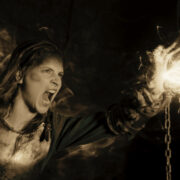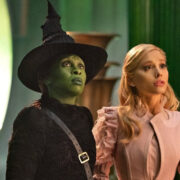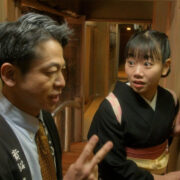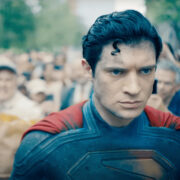How THE WOLFMAN (2010) Breaks Down The Corrosive Ideology Of Its Predecessor
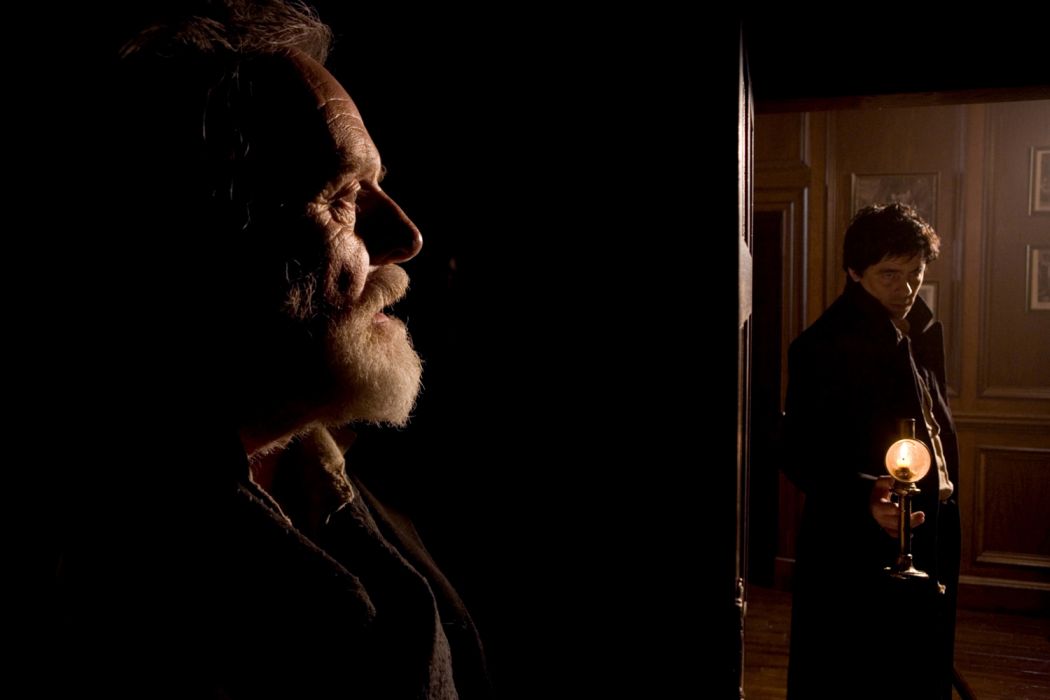
Danny Anderson teaches English at Mount Aloysius College in PA.…
The latest film version of The Invisible Man has hit theaters to great critical success. That film’s updating of a classic horror film brings a fresh ideological perspective to a foundational horror film. This is not the first time a remake of a classic Universal monster movie has done this.
On its 10th anniversary, I’d like to argue that 2010’s The Wolfman, a remake of Universal Studios’ classic 1941 Lon Chaney Jr. vehicle, The Wolf Man, is a far better and more interesting movie than it’s given credit for being.
Directed by Joe Johnson and starring Benicio Del Toro, Anthony Hopkins, and Emily Blunt, the film effectively updates the special effects, violence, and sex appeal of the original film, and it does so while still retaining the lavish Gothic atmosphere of the original. However, beyond the movie’s production value, there lies a profound reversal of the 1941 film’s underlying ideology.
George Waggner’s original film is one of the classics of the Universal cycle of horror films, joining Dracula, Frankenstein, The Bride of Frankenstein, The Mummy, and The Invisible Man in the pantheon of original cinematic horror classics. Its importance to the horror genre, and particularly to the werewolf canon, cannot be overstated, as Curt Siodmak’s revolutionary script virtually invented modern werewolf mythology in one masterful stroke.
Yet the film bears the ideological marks of its time and it works to reinforce an aristocratic, xenophobic, patriarchal view of the world. When Larry Talbot is finally destroyed by his father, the film restores its world to the normalcy of a world ruled by rich, white men.
This is the ideology that Johnson’s film confronts. His film does not simply update the plot and adrenaline-boost of the original, it utterly undermines its social and political assumptions. Here, the aristocratic father is not the kindly restorer of normalcy, he is its demonic destructor. And Lawrence Talbot’s tragedy is not in failing to live up to his patriarchal inheritance, it is his sacrifice in burning that poisonous inheritance to ashes.
The Wolf Man Versus Wolfman
1941’s The Wolf Man introduced one of the Universal classic monster cycle’s most important characters, Larry Talbot. One of horror cinema’s most tragic figures, Lon Chaney Jr.’s Talbot brought both energetic rage and sorrowful empathy to the audience.

In the original film, Larry is the son of Sir John Talbot, lord of Talbot Castle, an old-world estate that is rather surreal in nature. The town under his care is Central European in setting, but the townsfolk are alternatively American, English, and Romani. It is a place out of time altogether.
Larry has returned after a long alienation from his family in America following the death of his older brother, the heir to Sir John’s estate. Larry soon meets Gwen who he accompanies (along with her friend) to a Gypsy encampment for music, games, and fortune-telling. It is here that Larry is attacked and bitten by a werewolf, bringing the curse upon himself.
Rational Sir John refuses to believe Larry’s story until the end of the film, when he must literally beat the Hell out of him; Sir John beats Larry to death with a silver-headed cane, ridding him of his curse through death and restoring order to the natural world. 2010’s Wolfman updates the story significantly.
Lawrence Talbot is still alienated from his father, but instead of being a likable working-class Everyman, he is a successful, yet tortured, actor portraying Hamlet on stage. Lawrence’s brother Ben does not die off-screen in a random hunting accident here, he is eviscerated by a savage werewolf. Gwen is the fiance of Ben and urges Lawrence to return to Blackmoor.
As it turns out here, the werewolf curse does not originate in a Gypsy outsider, but within Sir John himself, who contracted the curse adventuring in Asia.
The remake is significantly more violent and spectacle-driven than its atmospheric ancestor, although it works very hard to retain a vision of the Gothic, owing as much to Hammer Films as to Universal in this regard. The set design is luscious and unrelentingly eerie. In addition, the film features a fantastic set-piece sequence in which Lawrence transforms into the werewolf (a brilliant throw-back costume design by Rick Baker) in front of a scoffing room of Men of Science, butchering everyone before escaping into the night. It is one of the most satisfying scenes in the history of werewolf movies.
The film ends with a spectacular battle in which father and son fight to the death as Talbot Castle burns down around them. Ultimately it is Gwen who kills Lawrence with a silver bullet, ending his suffering.
Walking Sticks and Shifting Ideology
The plot of the remake ramps up the violence and dramatic stakes as moviegoers would expect in the Twenty-First Century. But what makes the film so interesting are the subversive details. Take the famous walking stick, for instance. In the original film, Larry purchases the at Gwen’s shop as much to impress her as anything else. The silver wolf’s head and pentagram design (on of horror’s most famous artifacts) is both a harbinger of the curse to come and the cure for the curse.
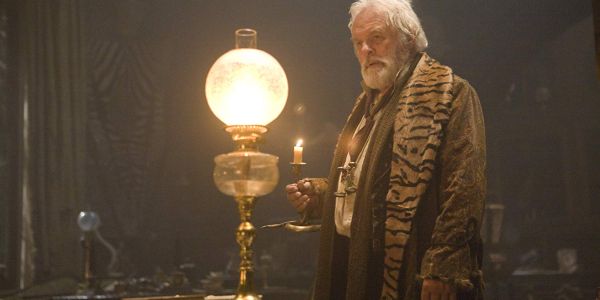
But it also has distinct phallic importance. The original film was made at the height of cinema’s fascination with Freud and cinema was awash in phallic symbols. This iconic walking stick works nicely in this way. It is, after all, a way for Larry to assert his manhood in front of Gwen, initially. In the end, it is the weapon of the patriarch to beat the corruption out of his son and bring him back into the established order of things.
The remake works early on to rob the walking stick of its symbolic power. In 2010’s version of events, Lawrence acquires the stick in an enigmatic, almost mystical manner. In a train car on the way home to Blackmoor, a kindly elderly gentleman (played with the usual aplomb by the great Max von Sydow) who suggests he might need it on the moor. After telling Lawrence that “its heft is too great for me these days,” the old man hands the finely crafted stick to Lawrence, who after admiring it, kindly refuses it, going back to sleep. When he awakens, the man is gone but has left the stick with him anyway. Lawrence takes it, but it plays virtually no role in the rest of the film.
In this scene, the film establishes the ancient power of this symbol of patriarchy, but it is a power to be feared now, not admired. And the movie undermines it just as it undermines the power of patriarchy in general.
Whiteness and the Gypsy Other
Despite the sympathetic portrayal of Maleva, the Gypsy fortune-teller in The Wolf Man (no doubt a result of a “for all-time” performance by Maria Ouspenskaya), the 1941 original ultimately places the responsibility for the werewolf curse in the camp of the roving ethnic outsiders. Maleva’s son, Bela (Bela Lugosi) was the source of the curse, and the Gypsy’s magical belief system seems to keep the beast’s power alive. The people in Sir John’s fiefdom are a happy, healthy, even prosperous people. If not for the invasion of the Gypsy camp, the film asserts that they would have continued as such. Sir John’s destruction of Larry with his silver-topped cane is the act of beating the Gypsy out of him as much as anything.
Joe Johnson’s remake acknowledges the xenophobia of the original and weaves a critique of its inherent racism into the very plot of the film. First, we discover early on that Lawrence and Ben’s mother was a Gypsy herself, making the heirs to Blackmoor of mixed heritage. Furthermore, given that their father turns out to be the monster in the film, the best parts of the boys seem to come from their ethnic-other mother.
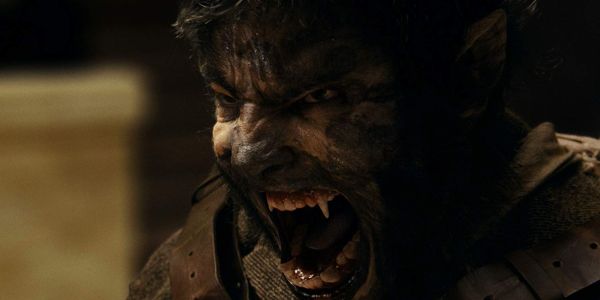
Second, as we have already seen, it is Sir John who is the beast in this film. In fact, he does not even need to be in the form of the werewolf to be monstrous; he is a brutal man in his human skin as well. Still more, the only reason he hadn’t ravaged the community for the previous decades was that his Sikh manservant kept him locked up during full moons. Here, ethic outsiders are not only innocent of evil, they are in fact the only thing standing between evil and civilization.
Finally, the film makes explicit the racism that was perhaps implicit in the original film. When faced with murder in their community, the villagers make their racist thoughts about their Romani neighbors apparent in public conversation, and very soon they launch a threatening assault on their encampment, only to be interrupted by the murderous rampage of the aristocratic, extremely English werewolf.
Conclusion: A Neglected Gem
The Wolfman strikes a delicate balance; it is simultaneously respectful of its 1941 predecessor as well as honest about the problems that great film’s ideology presents to modern audiences.
The original film has many great strengths, including the Gothic, otherworldly atmosphere and the stellar performances by Chaney and company. In addition, enough cannot be said for how The Wolf Man established the narrative and images for every werewolf film to follow it. It is a work of genius.
The Wolfman recognizes the greatness of its forebear. By setting the remake in a Gothic, Victorian setting, Johnson creates a beautiful and eerie atmosphere worthy of its predecessor. And Del Toro’s wonderfully empathetic performance is a real homage to Chaney’s Larry Talbot; there is even one scene in which Del Toro mimics Chaney’s walk as he lumbers across the moor.
In addition, the remake adds a visceral element to the story, borrowing much from John Landis’s own ode to The Wolf Man, 1981’s An American Werewolf in London. Not only is Rick Baker brought on for the makeup and werewolf design, the film also casts actor David Schofield in a small role as another hat-tip to the 1981 classic. And Talbot’s rampage through London bears too striking a resemblance to David’s destruction of Piccadilly Square in American Werewolf. In short, this film is utterly respectful of its predecessors as if it knows that werewolf movies would not exist as we know them today without The Wolf Man.
Yet to grow, we all must recognize and try to overcome our ancestors’ shortcomings. And this film is committed to that work. Not only does it show us Sir John Talbot in a new, critical light, it reveals a corrosive ideology underneath a great, genre-defining film.
Does content like this matter to you?
Become a Member and support film journalism. Unlock access to all of Film Inquiry`s great articles. Join a community of like-minded readers who are passionate about cinema - get access to our private members Network, give back to independent filmmakers, and more.
Danny Anderson teaches English at Mount Aloysius College in PA. He tries to help his students experience the world through art. In his own attempts to do this, he likes to write about movies and culture, and he produces and hosts the Sectarian Review Podcast so he can talk to more folks about such things. You can find him on Twitter at. @DannyPAnderson.






